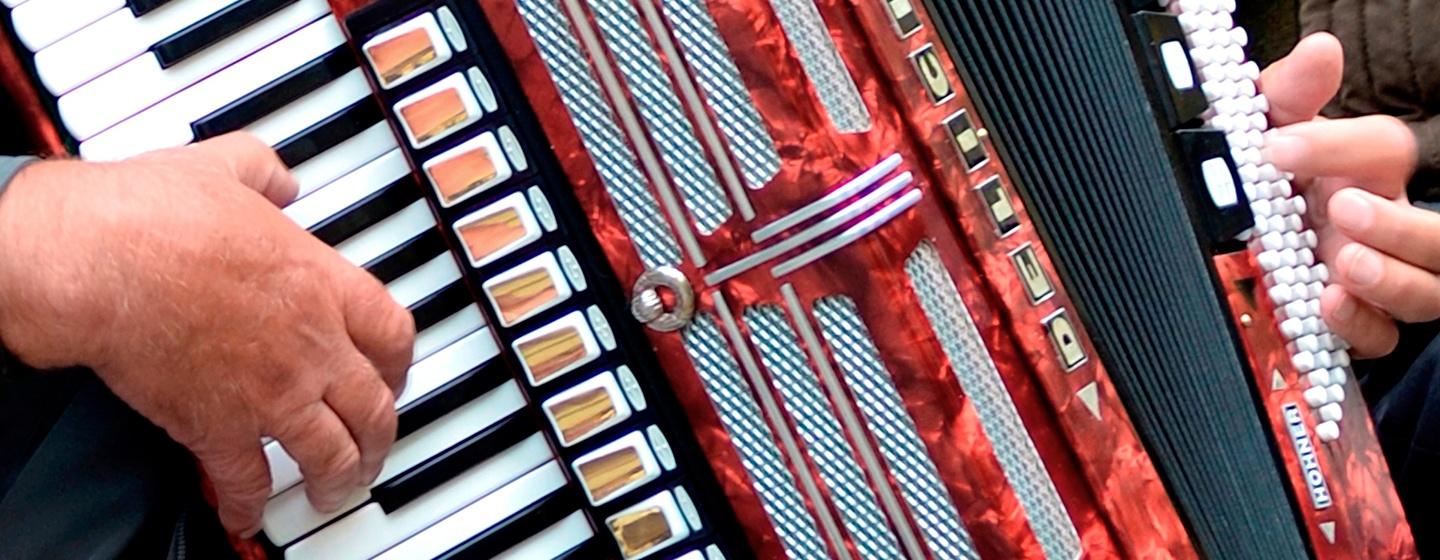The History of Polka: From Europe to Northeast Ohio
Northeast Ohio is home to a lively polka scene, made possible by polka’s rich cultural roots and loyal supporters. Polka’s infectious rhythm and spirited steps have been captivating dancers and music enthusiasts for generations, with a deep history spanning centuries and continents. Let’s take a journey through the history of polka, exploring its origins, evolution and enduring popularity.
The Birth and Rise of Polka
The origins of polka are a bit shrouded in mystery, but it is widely believed to have emerged in the mid-19th century in the region of Bohemia, which is present-day Czech Republic and Poland. The word “polka” is thought to be derived from the Czech word “půlka,” meaning “half-step” or “half,” referring to the quick, half-step dance movements of polka.
One popular origin story is that a servant girl in Bohemia invented the dance, which was then transcribed and passed along by her employer. An unlikely tale influenced by the Romantic idealization of peasant culture, this origin story forgets the fact that the polka is a couple’s dance. Polka more likely evolved from the waltz, which had scandalized elites with the amount of physical contact between dance partners.
Characterized by its three quick steps and a hop, polka’s catchy 2/4-time signature and lively tempo made it a favorite among dancers and musicians alike. By the mid-1800s, polka had spread across the continent, and its charm had captured the hearts of people from all walks of life.
As polka became a sensation in the dance halls and ballrooms of Europe, the elite class’s views hadn’t evolved past the shock of the waltz. Historian and polka bandleader Rich March explained, “Couples whirling in each other’s arms now hopped frenetically to a sprightly, rapid tempo … High society was outraged by this fast couple’s dance. It’s no wonder polka was embraced not only by young members of the elite but also by the middle and working classes.”
A dance with rebellion at its core, polka’s success could not be stopped.
Polka Around the World and in Your Backyard
Polka’s journey did not stop at the borders of Europe. As European immigrants flocked to the United States in the 19th century, they brought their cultural traditions with them, including the polka. It didn’t take long for this dance to become a staple at social gatherings and celebrations throughout the country.
Here in Northeast Ohio, our region has a strong Polish and Eastern European heritage, which has fostered a deep appreciation for polka. Cities including Cleveland, Akron and Youngstown have embraced polka music and dancing as integral parts of their cultural identity. Northeast Ohio is home to numerous polka bands, festivals and clubs, making it a hub for polka enthusiasts. The annual Dyngus Day celebration in Cleveland is attended in droves, a prime example of the region’s love for polka. In Northeast Ohio, polka isn’t just a dance; it’s a cherished tradition that continues to bring communities together in celebration of their heritage.
In Mexico, polka evolved into a regional dance known as “polka norteña,” influenced by European immigrants and adapted to local musical styles. Similarly, in Scandinavia, polka merged with traditional folk music to create unique regional variations.
Polka in Popular Culture
Throughout the 20th century, polka continued to thrive in various forms. It found its way into popular music and movies, becoming a symbol of joyful celebration. Iconic musicians like Cleveland’s own Frankie Yankovic, “The Polka King,” and “Weird Al” Yankovic (no relation) incorporated polka rhythms into their music, introducing the dance to new generations of listeners.
Polka Today
Today, polka is far from a relic of the past. While it may not dominate the mainstream music scene, it maintains a passionate following among enthusiasts who appreciate its energetic melodies and lively dance steps. Polka festivals, dance clubs and cultural events are still held worldwide, showcasing the enduring appeal of this vibrant tradition.
The history of polka is a testament to the enduring power of music and dance to transcend borders and bring people together. From its humble beginnings in Central Europe to its global popularity, polka has left an indelible mark on the world of music and dance. When you think of polka, think of it as a celebration of life and culture that continues to captivate hearts and feet around the world.
Learn More
Want to experience polka like never before? Tune into THE WORLD ACCORDING TO POLKA, a six-part series airing Fridays at 8:30 PM beginning Oct. 13. For more air dates, visit pbswesternreserve.org/luminus/the-world-according-to-polka.
Find more polka programming, including PBS Western Reserve LuminUS programs POLKA ACROSS AMERICA and A POLKA CHRISTMAS WITH THE CHARDON POLKA BAND, free on-demand at video.westernreservepublicmedia.org. Can’t get enough? Sign up or log into PBS Passport to stream select programming including 10 seasons of LET’S POLKA.




